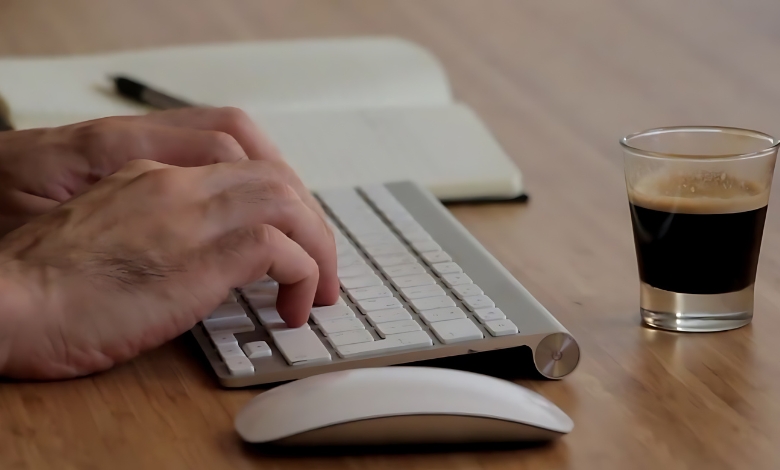Learn how to measure for a suit jacket with clear steps, real examples, and simple guidance so you always get the perfect fit.
To measure for a suit jacket, you measure your chest, shoulders, sleeves, waist, and jacket length using a soft tape. Stand naturally and avoid holding your breath or flexing so your results stay accurate. Just as professionals understand the importance of proper measurement in business contexts, getting your suit measurements right ensures a perfect fit and polished appearance.
I don’t know about you, but the first time I tried to measure myself for a suit jacket, I stood there with a tape measure feeling like I was about to assemble a spaceship. It looked simple… until I actually had to do it. I pulled the tape too tight, then too loose, then somehow got stuck in my own arms like I was fighting an octopus.
And maybe that’s where you are too… staring at this mysterious little measuring tape, wondering why something so basic feels like the adult version of a puzzle you didn’t sign up for.
But here’s what I slowly realized as I kept messing up and trying again: measuring for a suit jacket isn’t about perfection. It’s about understanding your shape, taking your time, and not pretending you’re some mannequin with perfect posture.
That’s what we’re doing here… diving into the real process, the human one, the one you can actually follow without panicking. And the whole time, I’ll talk to you like you’re standing right next to me, tape in hand, trying to figure this out step by step.
Let’s go.
Article Breakdown
Understanding the Core Measurements
Before you get overwhelmed by numbers, here’s the first thing you should know: your suit jacket is shaped around a few essential measurements. Everything you do from here builds on these.
And yes, these are the ones tailors obsess over, which means you should too.
Chest Measurement
This is the big one… the number that usually becomes your jacket size.
If the chest measurement is wrong, the jacket will look wrong no matter what else you get right.
How to Measure
- Stand straight but don’t puff up your chest like you’re posing.
- Wrap the tape around the fullest part of your chest.
- Keep the tape parallel to the ground.
- Make sure it’s snug, not squeezing.
Why You Have to Do It This Way
If it’s too tight, the jacket buttons will pull and make you look tense. If it’s too loose, you’ll disappear inside the fabric.
Think of this measurement as the foundation of your suit jacket. If the foundation is off, the whole structure feels unstable.
Shoulder Measurement
This might be the part where you want help, but if you’re doing it alone, trust me… go slowly.
The shoulders are the soul of the suit. If they fit wrong, the entire jacket collapses visually, even if everything else is perfect.
How to Measure
- Start at the end of one shoulder bone.
- Run the tape straight across your back.
- Stop at the same point on the other shoulder.
- Don’t let the tape curve or droop.
What This Controls
Structure. Shape. Confidence. You want the jacket to sit right on your shoulder bone… not slump off it and not grip it too tightly.
Sleeve Length
Sleeve length is sneaky. You think it doesn’t matter… until you wear a jacket where the sleeves fall halfway over your hands. Or worse, they stop too high and make you look like you borrowed your little brother’s suit.
How to Measure
- Keep your arm relaxed at your side.
- Start at the shoulder point.
- Follow the natural curve of your arm.
- Stop at the point where your wrist bone sits.
A Small Detail That Makes a Big Difference
Most people like showing a bit of shirt cuff… about half an inch. If you want that look, add a small adjustment.
Jacket Length
This one decides how balanced and intentional your jacket looks.
Too short… you look like you rushed out in someone else’s blazer. Too long… everything starts to droop visually.
How to Measure
- Start at the top of your shoulder.
- Measure down to about where your knuckles sit when your arms are resting naturally.
The Real Decision
This is where personal style comes in. Classic length is timeless. Shorter lengths feel modern. Longer lengths feel bold. Choose what matches who you are.
Waist Measurement
Even if your jacket isn’t a slim fit, the waist matters because it shapes the jacket. It gives your silhouette definition instead of letting the fabric hang like a curtain.
How to Measure
- Wrap the tape around the narrowest part of your waist.
- Keep it snug… never squeezed.
Why You Need This
This measurement helps determine whether your jacket gives a straight, tailored, or tapered look.
Optional Measurements
These aren’t required for every jacket, but they make a noticeable difference, especially if you like your clothes to feel custom.
Sleeve Opening
This affects how your cuffs sit over your watch or shirt.
Bicep Width
If you lift weights or naturally have fuller arms, this prevents tightness.
Back Width
Great for people whose shoulders slope more or whose posture curves forward slightly.
These small details make the jacket feel like it was made for you… because in a way, it was.
Step-by-Step: How You Actually Do This at Home
Here’s the part where everything comes together. The good news? Once you understand the measurements, the process becomes surprisingly simple.
What You Need
- A soft measuring tape
- A fitted T-shirt
- A bit of patience
- A helper (optional but definitely helpful)
Step 1: Stand Naturally
Relax your shoulders. Drop your arms. Breathe normally. Your “measurement posture” shouldn’t be some exaggerated version of yourself.
Step 2: Measure the Chest
Wrap and record. Keep it natural.
Step 3: Measure the Shoulders
Shoulder bone to shoulder bone. There’s no shortcut here.
Step 4: Measure the Sleeves
Down the curve of your relaxed arm.
Step 5: Measure Jacket Length
Top of shoulder to knuckle line.
Step 6: Measure Your Waist
Snug and real.
Step 7: Match Your Numbers to the Size Chart
Different brands have different sizing, but your measurements stay true.
A Little Insight
Some people say you need a tailor for perfect measurements. Others say you can do everything at home.
Honestly? If you follow these steps carefully and don’t rush, you’ll get results that are surprisingly accurate… and you’ll understand your own body better too.
Fit Types and What Your Measurements Really Mean
Once you have your numbers, the next step is choosing how you want your jacket to express those numbers.
Slim Fit
Sharp, close, and clean. Works great if your shoulders are narrow and your waist tapers.
Regular Fit
Balanced and structured. This is the fit most people default to because it works for many body types.
Classic Fit
Roomy, timeless, comfortable. If you prioritize movement, this is your zone.
Something to Keep in Mind
People don’t see your numbers. They see how your jacket sits on your body. The right fit type can elevate even the simplest measurements.
Common Mistakes You Should Avoid
Here’s what people mess up all the time… and what you’ll now avoid:
Measuring over bulky clothes
Adds fake inches you’ll regret.
Flexing when measuring the chest
You’re not auditioning for a superhero movie.
Ignoring shoulder slope
Shoulders are personal. Some slope more than others.
Measuring alone for the tricky parts
Sleeves and shoulders almost always need a helper.
Assuming your “usual size”
Bodies change. Posture changes. Age changes. Your measurements aren’t the same every year.
Comparison Table
| Approach | Accuracy | Best For | Weak Spot |
|---|---|---|---|
| DIY at Home | High with careful steps | Anyone measuring alone | Harder for shoulders |
| Professional Tailor | Very high | Custom suits | Costs more |
| Online Size Charts | Medium | Quick shopping | Doesn’t match all body types |
| Body Scanner Apps | Medium to High | Tech-friendly users | Lighting and posture errors |
Frequently Asked Questions
How long does measuring take?
Around 5 to 10 minutes once you get into the rhythm.
Can you measure yourself without help?
Yes, but shoulders and sleeves are much easier with someone assisting you.
How do I know my jacket size from my chest measurement?
Your chest measurement usually matches the jacket size number.
Should a suit jacket show shirt cuffs?
Most people prefer a small sliver of shirt cuff showing for a clean look.
Do different brands use the same sizing?
No, which is why your own measurements matter more than the tag.
Key Takings
- Learning how to measure for a suit jacket starts with relaxing and standing naturally.
- Your chest and shoulders decide the main structure of your jacket.
- Sleeve and jacket length shape the visual balance of your look.
- Waist measurement helps the jacket contour instead of hanging flat.
- Avoid measuring over thick clothing or flexing while taking measurements.
- Choose your fit type based on comfort and personal style, not trends.
- Your measurements will always be more accurate than guessing your size.



